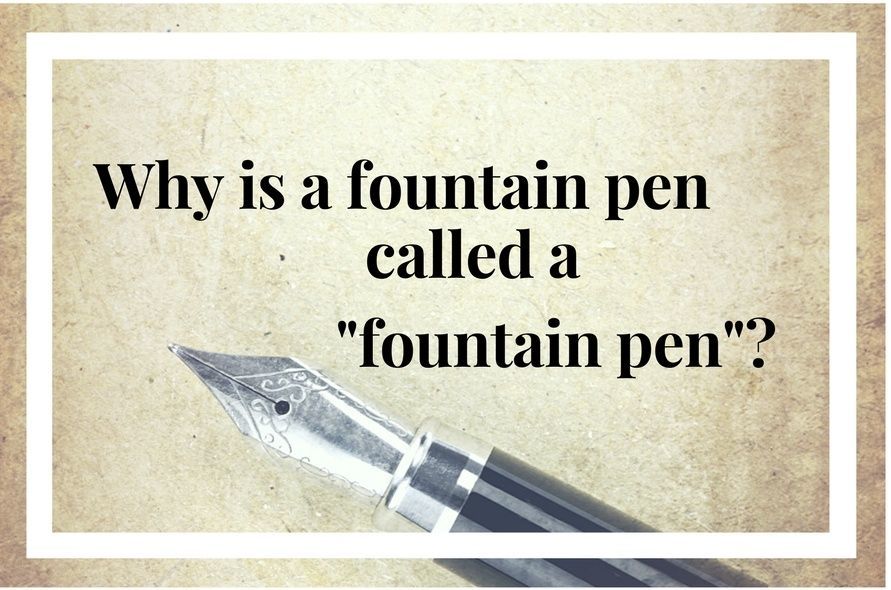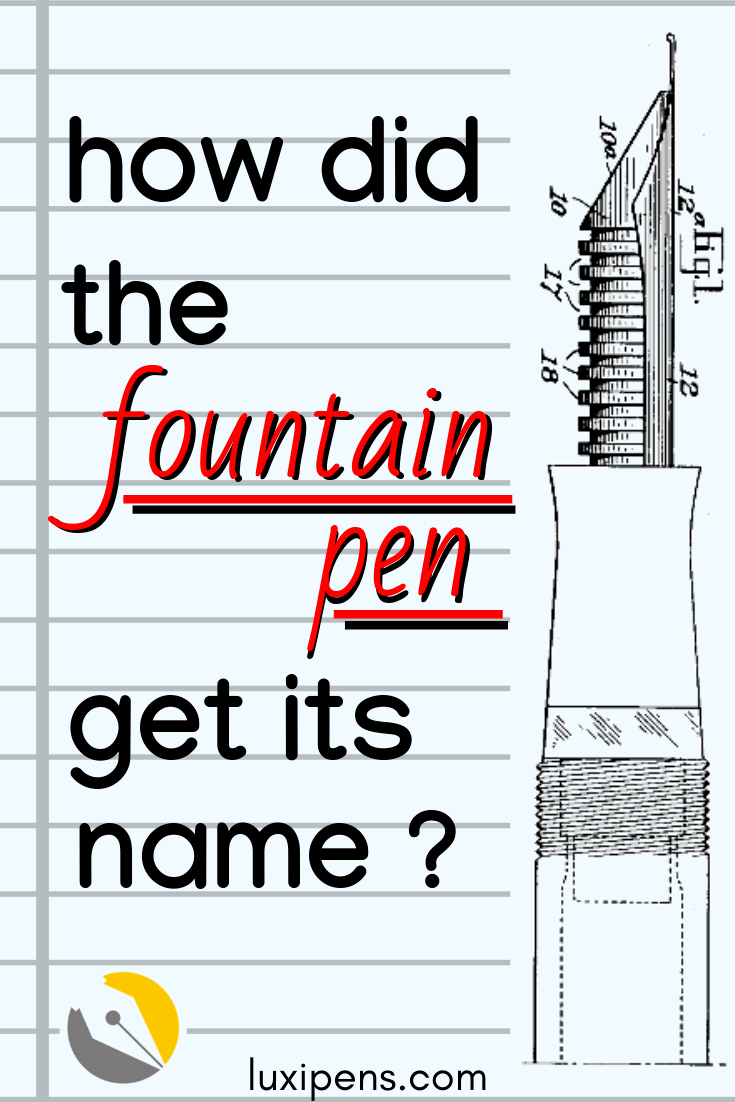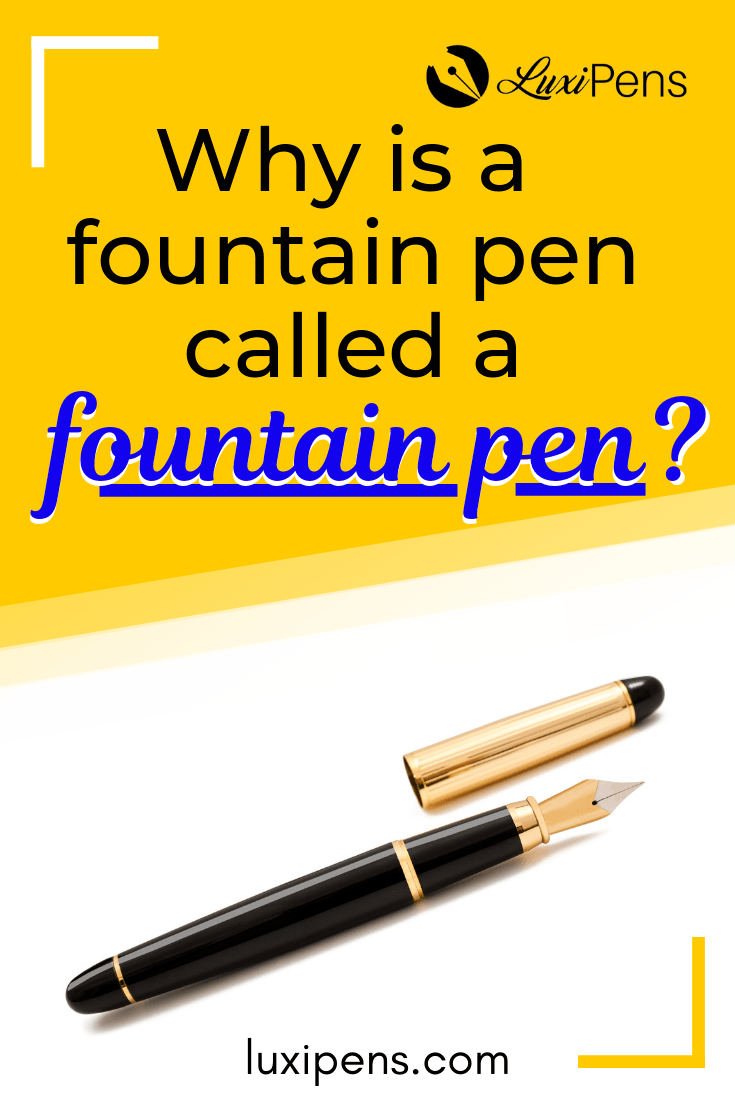Where does the name "fountain pen" come from?
The fountain pen has a long and complex history that begins with the messy dip pen and culminates in the refined fountain pen we know today. The quick answer to the question of "How did the fountain pen get its name?" is this:
A fountain pen is called a fountain pen because it contains a seemingly endless supply, or a ‘fountain’, of ink.
This, however, is the middle of the story on the origin of the fountain pen name. The full answer is much more complex and the history of the fountain pen is rooted in the tradition of written communication dating back to a millenia.
Prior to the fountain pen, the world used dip pens. A dip pen required dipping a writing instrument into an “inkwell” (a small container for your ink, ink bottle). However, this practice was inconvenient, especially for travel as writers had to carry both the inkwell and pen with them. This wasn’t well-suited for business dealings, transactions, or off-site contract signing. Putting the inkwell inside the pen was a logical solution to these issues.
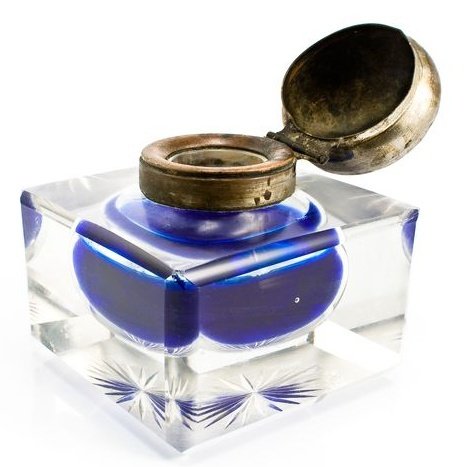
An image of an inkwell
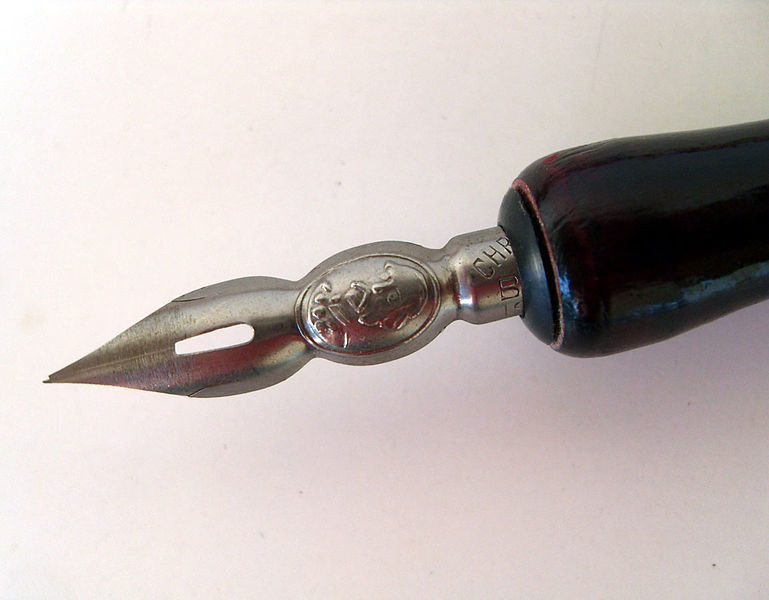
An early dip pen, courtesy of Fernando Martello
The construction of the fountain pen required a compartment inside the pen specifically designed for a miniature inkwell, this time called a “reservoir” (the source of ink). The way the ink flows from the reservoir down to the paper was described as if one was tapping an ink source, a wellspring, or a fountain. The pen became a fountain pen, as it was ‘self-supplying’, resulting in a river or fountain of ink flowing from the pen.
In terms of understanding the dilemma that writers were facing back then, it would be easiest to picture the idea of a well (like a “water well”), as opposed to a spring or a fountain. Imagine yourself drawing water from a well. Although, useful and perfectly functional, it is also tedious, tiring, and time consuming. Fetching water from a fountain, on the other hand, is relatively easy. In this analogy, the “well” is how a writer at that time uses a dip pen - constantly replenishing the ink. While the “spring” is the fountain pen, where the supply was sourced more easily, and much less frequently.
Scholars disagree about the earliest fountain pen prototype, but what follows is an overview of the fountain pen’s creation and development, tracing it from its earliest conception in Egypt to the lovely pens we know today.

An early example of a reed pen, found here
10th Century C.E. — Egypt; the Arab Fatimid dynasty. A Caliph, a religious head of state, demanded a pen “whose ink will be contained inside it… The writer can put it in his sleeve or anywhere he wishes and it will not stain nor will any drop of ink leak out of it. The ink will flow only when there is an intention to write”. This demand for an early fountain pen, however, may not have gone farther than simply a reference, as there is no evidence of such an item’s existence.
1508 — in Italy, Leonardo da Vinci. Da Vinci may have constructed his own fountain pens for personal use, though none have surfaced yet. Two illustrations of a design for a more rudimentary stylographic pen appear in Da Vinci’s notebook, yet there is no clear evidence that he was able to actualize his designs.
1616 — the Royal Registry of Augsburg (a city in Bavaria, now Germany) described “a pen with a silver-tubed handle that could be filled with ink, and with a nib of silver or goose quill”. In 1832, just sixteen years later, the City of Augsburg gave a pen to King Gustavus Adolphus of Sweden when Sweden invaded and conquered their kingdom.
1632 — German inventor Daniel Schwenter wrote in his publication Delicia Physic-Mathematicae about the idea of creating a fountain pen made from two quills. He describes the pen as having one quill inserted inside another, designating one as reservoir for ink. To contain the ink, a cork would be used to seal the quill. In order to use the pen, the ink would be squeezed through a small hole and flow down to the writing tip, creating a quill-reservoir pen.
1657 — Philips Zoete van Laeke, a governor from the Netherlands, wrote in his journal that in Paris, “there were pens with reservoirs that could be used to write twelve to thirteen pages”, providing evidence that fountain pens (or reservoir pens) as we understand them today had become popular.
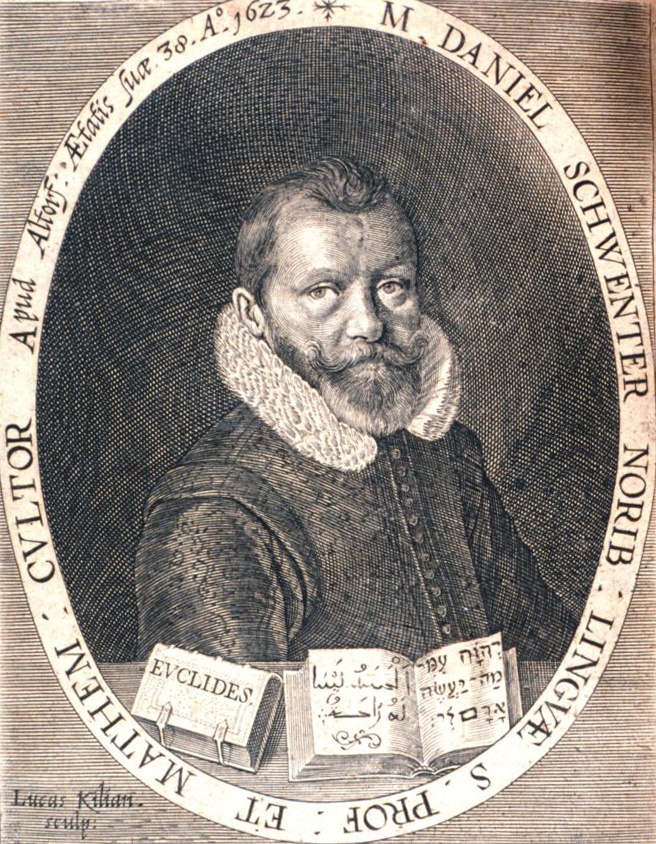
A portrait of Daniel Schwenter from his book; found here
1663 — On August 5th, British naval administrator Samuel Pepys wrote: “This evening came a letter about business from Mr. Coventry, and with it a silver pen he promised me to carry inke in, which is very necessary.” It seems Pepys received a silver reservoir pen as a gift, indicating that these pens were not unique to France.
1702 — The earliest known fountain pen is listed in antique publisher Michael Finlay’s book. The book shows three pens. One, which he labels “the earliest fountain-pen so far discovered”, is dated “1702”.

The title page of Bion's book, which French readers can read here
1723 — Nicholas Bion published an illustration and description of what closely resembles a modern fountain pen, made of brass and silver, in his book Traité de la construction et des principaux usages des instrumens de mathématique (Treaty of the construction and the principal uses of the instruments of mathematics).
1803 — Bryan Donkin patented the steel pen nib, but nothing came out of it. Donkin tried to sell his patent for the manufacture of metal pens in 1811 but no one bought it. Also in 1803, in London, another inventor introduced a complete steel nib, or rather the split cylinder steel-pen.
1809 — Frederick Bartholomew Fölsch of Oxford Street, London earned the first English patent for a pen with an ink reservoir. This pen functioned as a pen with a piston. Across the pond, in the United States, Peregrine Williamson of Baltimore earned the first American patent for a steel pen the same year. Williamson had trouble cutting a quill to serve as a pen, so he worked to create a steel nib that would serve his interests better. Though his original design was affected by the rigidity that plagued other attempts, he was able to remedy this issue by adding two additional slits to the nib, one on each side of the main slit. This created more flexible tines and, by extension, made writing significantly easier. You can find the patent linked here.
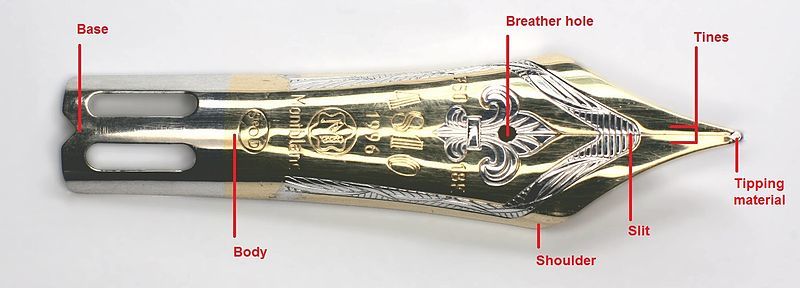
The anatomy of a fountain pen nib. Williamson's invention added slits to the sides, or shoulders of the nib, which made it more flexible. Image courtesy of Francis Flinch.
1819 — John Scheffer earned a British patent for the first half quill and half metal pen, which he later tried to mass manufacture.
1827 — Petrache Poenaru, a Romanian student living in France, patented the “never-ending portable pen, which recharges itself with ink”. This pen was a step forward because it prevented paper scratches as well as ink leaks.
1831 — John Jacob Parker, an Englishman, patented the first self-filling fountain pen. Although plagued with design flaws, ink spills, and other failures that left the pens impractical and hard to sell, this design would later influence refillable pens.

Lyman's and Baldwin's patent can be found here
1848 — Azel Storrs Lyman and Matthias W. Baldwin received a patent for the first fountain pen with a rubber sac, “a bag or chamber . . . made of India rubber”. This rubber sac would hold the ink inside the pen and would be less likely to leak than previous models.
1867 — M. Klein and Henry W. Wynne received a patent for an ink chamber and delivery system in the handle of the fountain pen. The ink chamber in this pen was especially popular, and the design would go on to influence a great number of pens in the future.
1875 — Duncan MacKinnon, a Canadian from Ontario, and Alonzo T. Cross, an American from Rhode Island, created the first stylographic pens (stylos). They had a metal tube with a wire inside to keep control of ink flow. These would become one of the first popular fountain pens and are still often used today in drafting.
1884 — Lewis E Waterman, an insurance salesman, noticed that the fountain pens of his day had problems with the ink leaking and blotting pages. He patented a pen with air holes into the ink chamber, which would balance the pressure in the chamber and reduce blotting significantly. Waterman later founded Waterman Pen Co., which is still in existence today.
1890 — William Purvis, an African-American inventor, patented improvements to the fountain pen that made it “more durable, inexpensive, and better… to carry in the pocket”. The introduction of an elastic tube to return excess ink to the reservoir instead of letting it sit in the nib made this possible and both reduced spills and increased the life of the pen and the ink. Purvis’ innovation made the fountain pen much less expensive and easier for the average person to afford. He also created and sold various other inventions, which improved the daily lives of the average person.
1896 — Morris Moore introduced the Non-Leakable Safety Pen, which had a retractable nib and a cap. An added benefit to this pen was that the retractable nib made it easier to refill the pen, as it was no longer necessary to take the pen apart. The patent for this pen is available here.
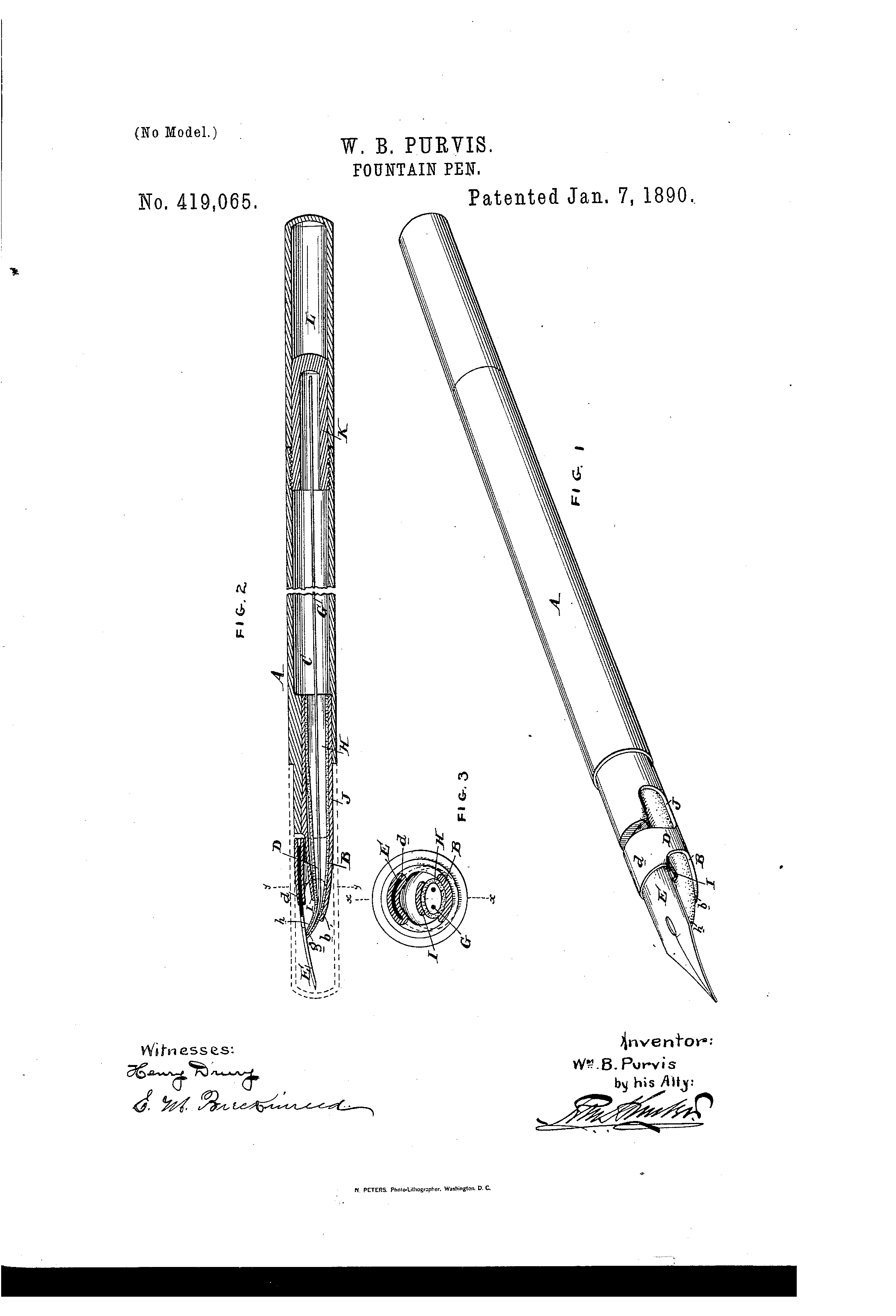
Purvis's patent is available here.
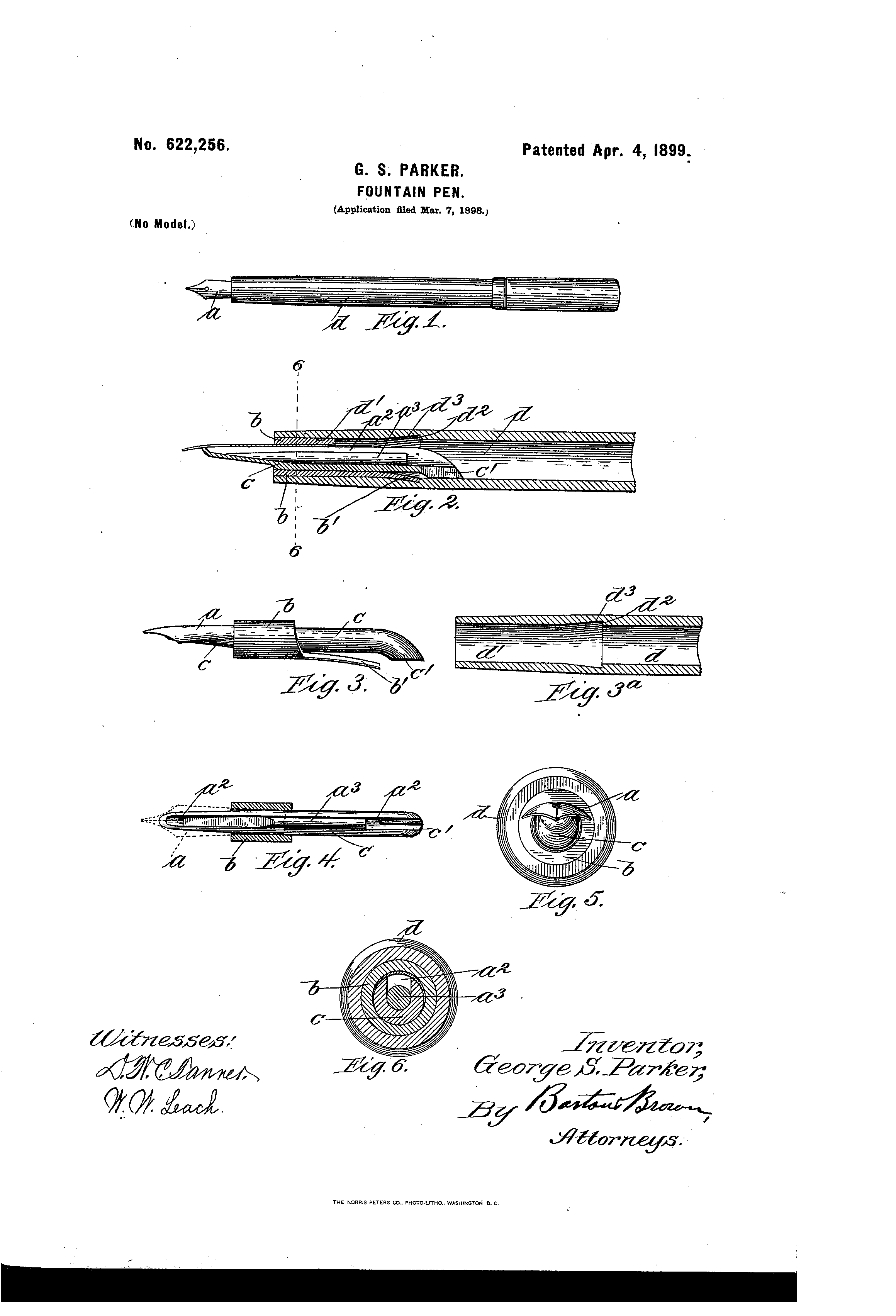
George Parker's Patent is available here
1898 — George Safford Parker (no relation to the aforementioned John Jacob Parker) patented the “Parker Jointless”, a pen that reduced the possibility of ink leaking out of the sides of the pen. Parker went on to found the Parker Pen Company, which is still in existence today.
1905 — John T. Davidson patented the button filling system, which was a significantly cleaner method of filling a fountain pen. Rather than having to use an eyedropper, which required a steady hand and was often a messy process, this system used a button on the end of the pen to create suction in the ink sac and worked much like a modern eyedropper. A user simply had to push the button, insert the pen into a bottle of ink, and release the button to suck the ink into the pen. Many future fountain pen innovations would follow in Davidson’s footsteps and work to make the pens easier to refill.
1909 — The Parker Jack-Knife Safety Pen introduced a screw-on, ink tight cap that provided an alternative to pens that featured retractable nibs as prevention of spilled ink.
1913 — Walter A. Sheaffer created Sheaffer Pens, which focused on developing a self-filling mechanism for his fountain pens. His company is still in business today.
1914-1918 — Fountain pens enjoyed a few years of increased popularity (and sales) during World War One, as letters flowed quickly between the Front and the family members left at home.
1925 — Theodor Kovàcs, Hungarian engineer, introduced a modern piston filler. In 1923, Kovàcs patented his design and sold a license to Edmund Moster, co-founder of the Moster Penkala Werke A.G. Company. When Moster couldn’t pay Kovàcs the royalties on the patent, Kovàcs tried to end the contract. Afterwhich, a court-ruling restricted Moster's licensing territories, freeing up Kovàcs' rights to resell his license. Kovàcs offered it to both Pelikan and Montblanc, finally contracting in 1927 with to German company, Günther Wagner Pelikan. Pelikan is still credited today for its "the invention of the differential-piston filling method". Perhaps, we should be crediting Kovàcs, instead?
This patented system filled a pen via a piston, a screw-shaped piece that would be inserted into an inkwell and gently twisted until it retracted into the body of the pen, drawing the ink with it. These pens further increased the ease of filling a fountain pen and reduced the chances of ink leakage or spills. Early models were unable to use much ink, as the piston’s length was dictated by the pen’s body, the introduction of telescoping pistons in 1949 virtually eliminated this problem. The piston-filling method is still popular in many fountain pens today.
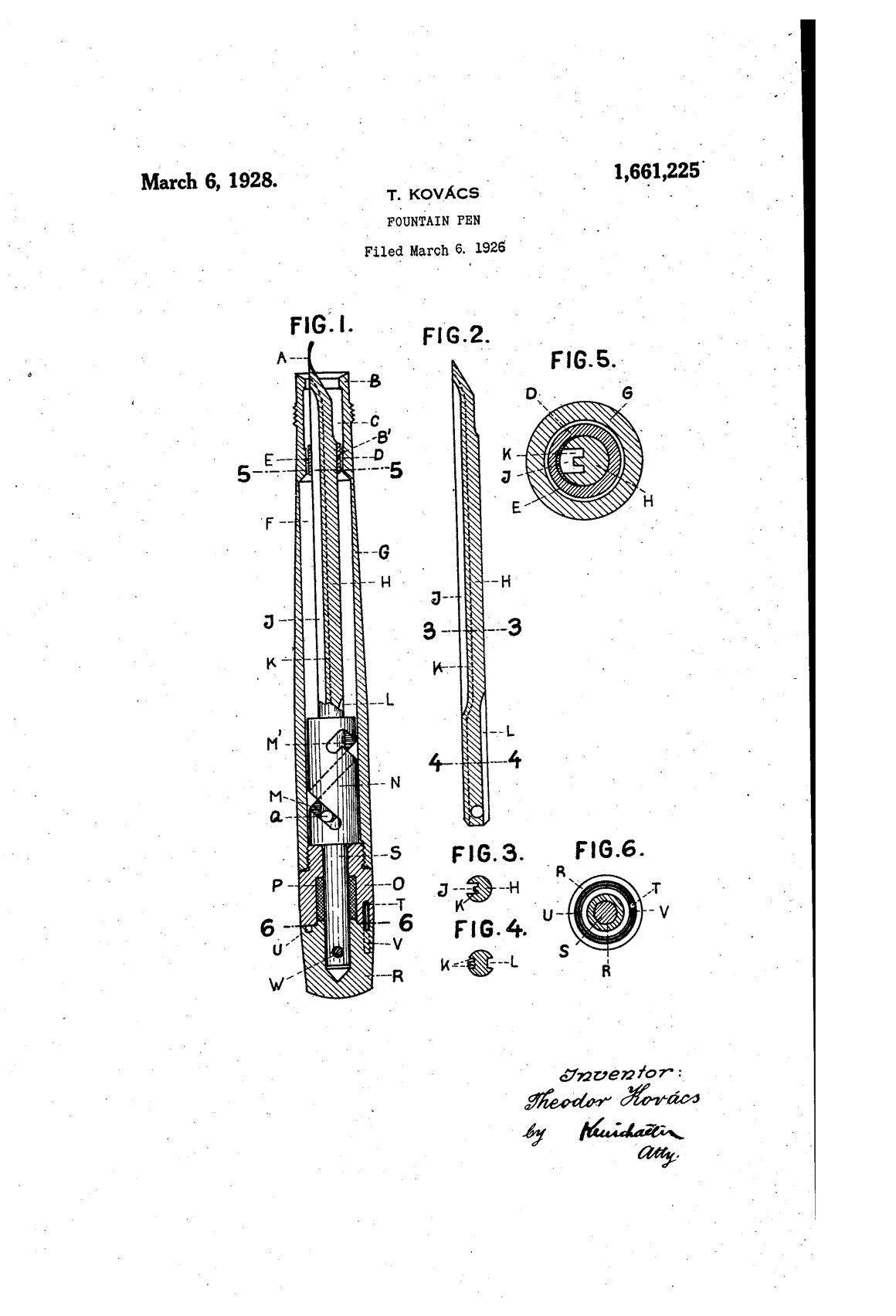
The patent for Kovàcs' piston filler is available here
1927 — Pelikan Pens introduced its first pen model, which was one of the earliest fountain pens designed with attention to aesthetics. Pelikan began as a supply store for artists. This pen used the Kovàcs-designed piston filler and sold incredibly well, as it was much cleaner than previous pens.
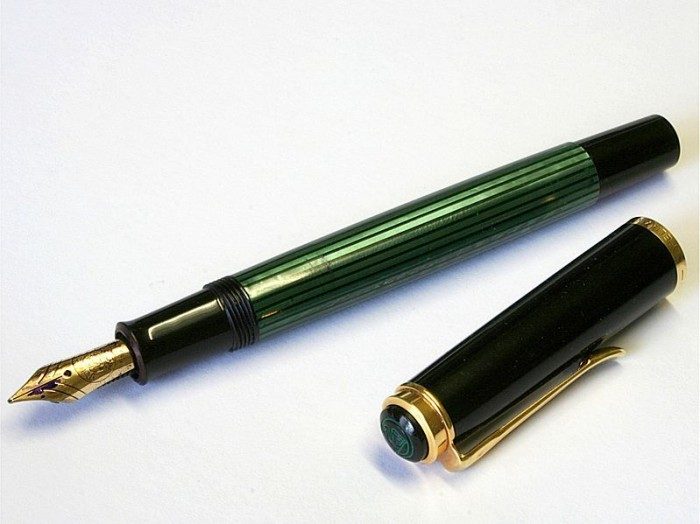
An early pelican pen, courtesy of Lothar Spurzem
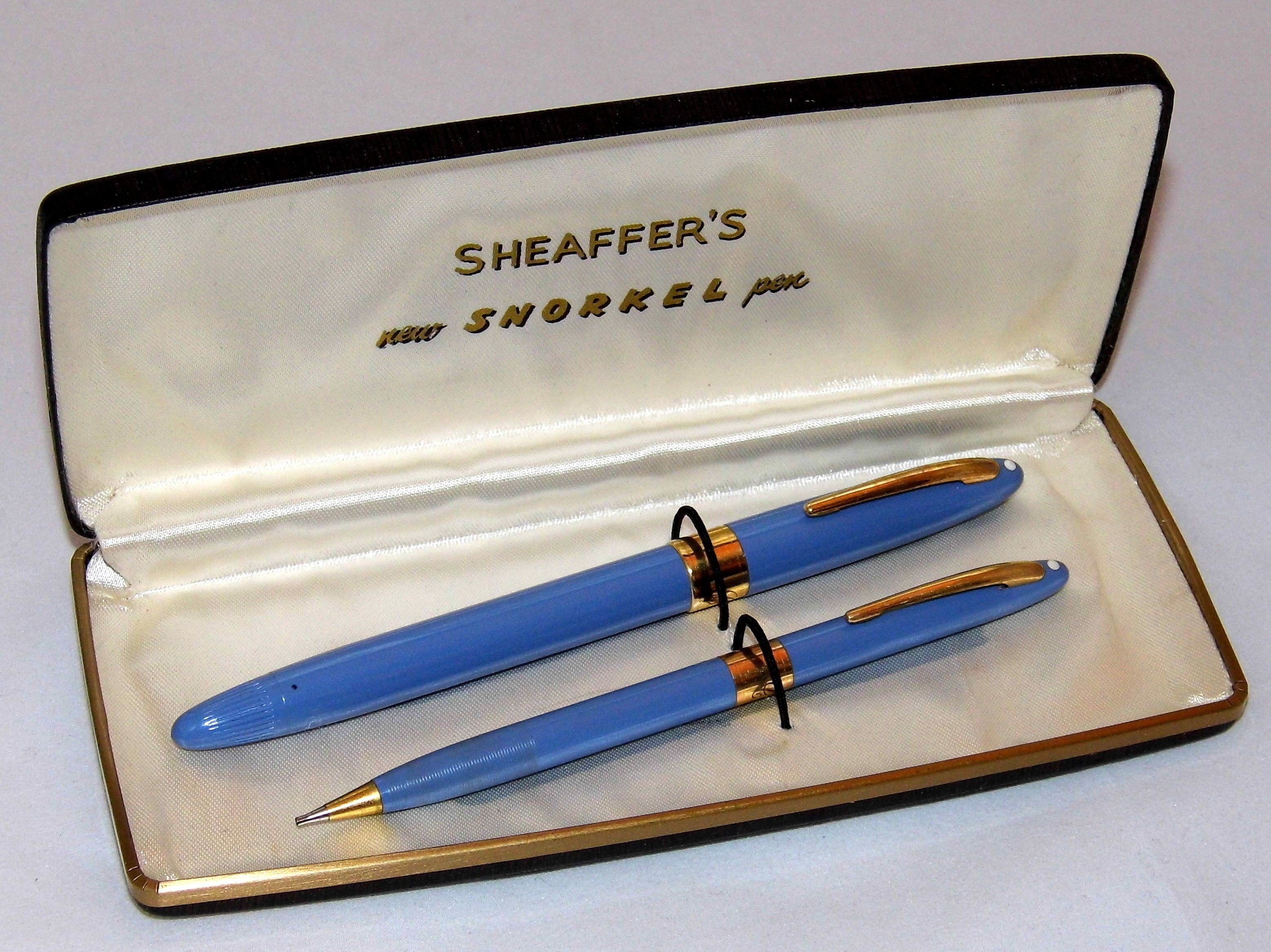
A Sheaffer Snorkel pen, courtesy of Joe Haupt. This model is one of the earliest iterations of this model of pen.
1939-1945 — Letter writing, and by extension, fountain pens, experienced another surge in popularity during the second World War. As more Americans than ever left to fight overseas, letter writing (and the fountain pens that enabled it) became ever more important for those both at home and abroad.
1952 — Sheaffer Pens introduced the Sheaffer Snorkel, a small syringe-type mechanism that allowed for cleaner pen filling, as the ink no longer stained the nib when dipped and refilled.
1953 — Waterman pens introduced a plastic pen cartridge, which came pre-loaded with ink and made the ink replacement process much simpler.
1956 — The Parker “61” revolutionized the fountain pen filling system. Previous pens had relied on mechanical filling systems, but the Parker “61” filled itself via capillary action. Rather than having to twist or push, users simply had to unscrew the back of the pen and leave it in an ink bottle for a short time. This pen, however, had no removable parts. This minor design flaw led to the ink clumping inside the pen and rendering it unusable, and the Parker “61” was relatively short-lived. However, its capillary action filling system laid the groundwork for many modern fountain pens.
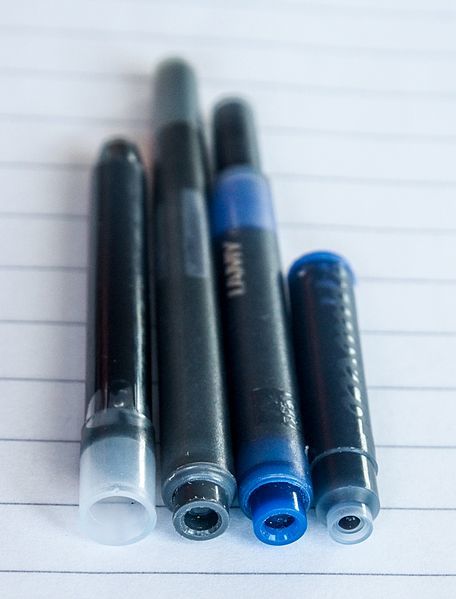
Modern day ink cartridges, inspired by waterman's early innovation. Image courtesy of Pavel Satrapa.
Though Ballpoint pens had become the primary public writing utensil by the mid 1950s, fountain pens have remained the top choice for many. Many appreciate their consistency, while others chose these masterpieces for ease or general feel. Artists often chose fountain pens for their easily variable line widths, while some simply appreciate choosing a pen that will generate less waste than a typical ballpoint. Whatever the individual’s reason, it is clear that fountain pens are popular, and will likely remain so for quite some time.
Interested in learning more specifics about how fountain pens work? Be sure to check out our article "How Does a Fountain Pen Work?" for a more thorough explanation.
The information presented in this article is only as accurate the material we were able to source, but may not be absolutely exhaustive, authoritative, nor complete. If you have additions or corrections which you believe should be included in this page, please consider sharing both the citation as well as the new information with us. Our goal is to foster an open dialogue with our readers.

